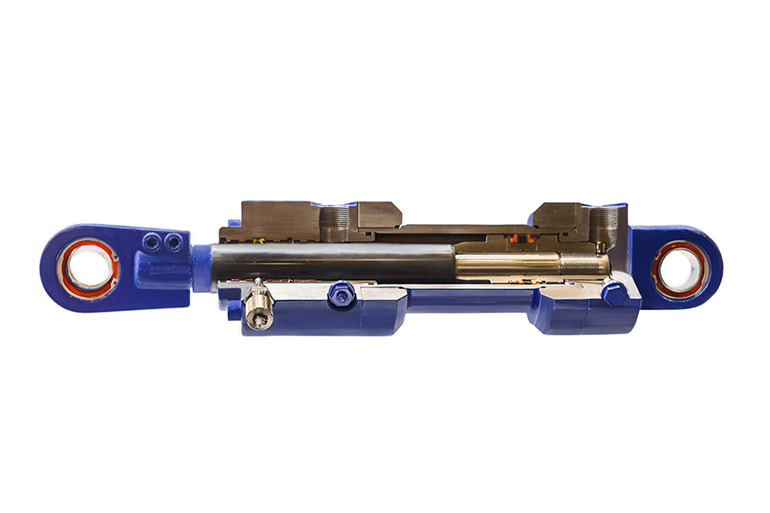By Josh Cosford, Contributing Editor
Hydraulic cylinders are unique in that they’re nearly 100% volumetrically efficient, although they are subjected to losses from mechanical efficiency. This means that nearly all the fluid stuffed into them results in proportional linear movement, but only some of the pressure required by them is to move their loads. Regardless, speed calculations with cylinders are reasonably accurate, making controlling velocity fairly straightforward. Here are 5 ways to control hydraulic cylinder speed.

- Meter-in flow control – The most common method to control the speed of a hydraulic cylinder is to limit the rate of flow entering its work ports. You could install meter-in flow control valves directly at the work ports, along the work lines or back at the valve stack or manifold. It’s imperative that the flow control employs a reverse-flow check valve to allow free flow out of the work ports for reasons I’ll explain shortly.
- Meter-out flow control – As you’d expect from the description, and contrary to the first example, metering out inhibits fluid from exiting the cylinder to control speed. The old pneumatic adage, “When in doubt, meter out,” should give you much doubt. In some circumstances, metering out can create pressure intensification, leading to possible leakage or failure. Never meter out when the rod-side fluid is tasked to hold the load of a double-acting cylinder, which, when exposed to retraction pressure, will combine with load pressure to raise rod-side pressure to danger levels. The possibility for intensification is why work-port needle valves are not popular for hydraulic cylinders, necessitating the reverse flow check valve.
- Needle valves – As already mentioned, you need to be careful here. But in many circumstances, this is the most effective and cost-sensitive method to control cylinder speed. Without check valves, needle valves restrict flow in both directions, which is suitable for applications with low-speed gravity down.
- Priority type 3-port flow control — This valve has a single inlet and dual outlet, and the adjustment controls the proportion of flow out of each of those ports. The priority (CF) port is often pressure compensated. It rules the flow hierarchy so that flow is no longer available at the third port (EF) if incoming flow drops below the priority flow setting.
You often see all-in-one 3-port flow controls with built-in relief valves, making them perfect for controlling one or two actuators in the system. Be mindful in applications where inlet flow is high while controlled flow is low, as all incoming flow is subjected to the operating pressure, leaving any excess flow wasted as heat.
- Proportional directional valves — A proportional valve varies its spool position using variable power by way of a PWM controller. The spool contains metering notches to provide a metered flow, which essentially operates like dual needle valves. However, energy loss can be mitigated depending on the spool type, pump type and control circuit.
If the valve spool moves a little bit, the valve flows a little bit. Pressure compensation, load sensing or sophisticated electronic control lend the proportional valve superior performance for controlling cylinder speed.
No matter the control method, providing your cylinders with a method to control speed is always helpful. Even a simple orifice will control hydraulic cylinder speed, although its performance could be improved compared to more advanced methods such as proportional control.
Filed Under: Components Oil Coolers, Cylinders & Actuators, Engineering Basics, Technologies